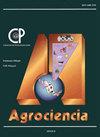蜜蜂生产者付出代价的干预与预测模型墨西哥的蜂蜜
IF 0.5
4区 农林科学
Q4 AGRICULTURE, MULTIDISCIPLINARY
引用次数: 0
摘要
蜜蜂(Apis mellifera L)蜂蜜是人类使用的最古老的食物之一。自古以来,由于其甜味和治疗特性,它一直被用作健康产品。2020年,墨西哥生产了54 121吨(Mg),使该国成为世界第十大生产国。假设当前的蜂蜜价格可以用以前的价格来解释,并且它们影响了墨西哥蜂箱数量的增加和蜂蜜的生产。为了验证这一假设,本研究的目的是建立墨西哥蜂蜜年平均价格(AAPH)的预测模型。数据包括1966年至2019年的价格,并使用了Box-Jenkins自回归综合移动平均线(ARIMA)方法,无论是否进行干预。模型参数采用SAS®软件的最大似然法估计,结构变化采用R软件的相应库(strucchange)计算。基于AAPH系列的模型适用于1966 - 2019年期间,并使用2018年和2019年的数据进行验证。该序列呈现了5个时期AAPH的趋势结构变化:1966 ~ 1985;1986−1995;1996−2003;2004−2008;和2009−2019。不加干预的最佳估计模型为ARIMA(1,1,1),加干预的最佳估计模型为ARIMA(1,1,0),说明历年价格可以解释AAPH。预测的平均绝对百分比误差(MAPE)在没有干预的模型中为8.16%,在有干预的模型中为4.02%。两种预测模型均显示AAPH在中期内呈上升趋势。干预后的ARIMA模型提供了更准确的AAPH估计和信息,为未来5年的规划和决策提供了信息。本文章由计算机程序翻译,如有差异,请以英文原文为准。
INTERVENTION AND FORECAST MODELS FOR THE PRICE PAID TO PRODUCER OF BEE (Apis mellifera L.) HONEY IN MEXICO
Bee (Apis mellifera L) honey is one of the oldest foods that humans have used. Since ancient times, it has been used as a healthy product due to its sweetening and healing properties. In 2020, Mexico produced 54 121 tons (Mg), which ranked the country as the tenth largest producer in the world. The hypothesis was that current honey prices can be explained by previous prices and that they influence the increase in the population of hives and the production of honey in Mexico. To test this hypothesis, the objective of this research was to develop a forecast model for the annual average prices of honey in Mexico (AAPH). The data comprised the 1966 to 2019 prices and the Box-Jenkins methodology of Autoregressive Integrated Moving Average (ARIMA), with and without intervention, was used. The parameters of the models were estimated with the maximum likelihood method of the SAS® software, while the structural change was calculated with the corresponding library (strucchange) of the R software. A model based on the AAPH series was adapted for the 1966−2019 period and validated with data from 2018 and 2019. The series presents five periods of trend structural changes of AAPH: 1966−1985; 1986−1995; 1996−2003; 2004−2008; and 2009−2019. The best estimated model without intervention was ARIMA (1, 1, 1) and the best model with intervention was ARIMA (1, 1, 0), which indicates that the prices of previous years can explain the AAPH. The predictions had a mean absolute percentage error (MAPE) of 8.16 % for the model without intervention and 4.02 % for the model with intervention. Both estimated models suggested that the AAPH have an upward trend in the medium term. The ARIMA model with intervention provided a more accurate estimation of the AAPH and information to plan and make decisions for the next five years.
求助全文
通过发布文献求助,成功后即可免费获取论文全文。
去求助
来源期刊

Agrociencia
农林科学-农业综合
CiteScore
0.50
自引率
33.30%
发文量
51
审稿时长
18-36 weeks
期刊介绍:
AGROCIENCIA is a scientific journal created and sponsored by the Colegio de Postgraduados. Its main objective is the publication and diffusion of agricultural, animal and forestry sciences research results from mexican and foreign scientists. All contributions are peer reviewed. Starting in the year 2000, AGROCIENCIA became a bimonthly and fully bilingual journal (Spanish and English versions in the same issue). Since 2007 appears every month and a half (eight issues per year). In addition to the printed issues, the full content is available in electronic format.
 求助内容:
求助内容: 应助结果提醒方式:
应助结果提醒方式:


